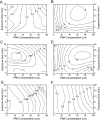Discrimination of viable and dead fecal Bacteroidales bacteria by quantitative PCR with propidium monoazide
- PMID: 19270114
- PMCID: PMC2681701
- DOI: 10.1128/AEM.01333-08
Discrimination of viable and dead fecal Bacteroidales bacteria by quantitative PCR with propidium monoazide
Abstract
Propidium monoazide (PMA) was optimized to discriminate between viable and dead Bacteroides fragilis cells and extracellular DNA at different concentrations of solids using quantitative PCR. Conditions of 100 microM PMA and a 10-min light exposure also excluded DNA from heat-treated cells of nonculturable Bacteroidales in human feces and wastewater influent and effluent.
Figures



References
-
- American Public Health Association. 1995. Standard methods for the examination of water and wastewater, 19th ed. American Public Health Association, Washington, DC.
-
- Field, K. G., and M. Samadpour. 2007. Fecal source tracking, the indicator paradigm, and managing water quality. Water Res. 41:3517-3538. - PubMed
-
- Flekna, G., P. Stefanic, M. Wagner, F. J. M. Smulders, S. S. Mozina, and I. Hein. 2007. Insufficient differentiation of live and dead Campylobacter jejuni and Listeria monocytogenes cells by ethidium monoazide (EMA) compromises EMA/real-time PCR. Res. Microbiol. 158:405-412. - PubMed
-
- Kildare, B. J., C. M. Leutenegger, B. S. McSwain, D. G. Bambic, V. B. Rajal, and S. Wuertz. 2007. 16S rRNA-based assays for quantitative detection of universal, human-, cow-, and dog-specific fecal Bacteroidales: a Bayesian approach. Water Res. 41:3701-3715. - PubMed
Publication types
MeSH terms
Substances
LinkOut - more resources
Full Text Sources
Other Literature Sources
Molecular Biology Databases

